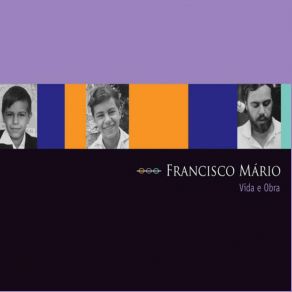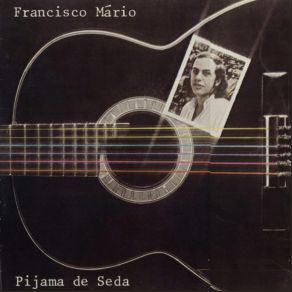Francisco Mário / Francisco Mario
Wikimp3 information about the music of Francisco Mário / Francisco Mario. On our website we have 8 albums of artist Francisco Mário / Francisco Mario. You can find useful information and download songs of this artist. We also know that Francisco Mário / Francisco Mario represents World Music genres.
Biography
[Edit]Cartoonist Henfil's and sociologist Betinho's brother Francisco Mário (Chico Mário) developed important work as a composer and instrumentalist. His hemophilia was an important factor for his dedication to the violão (acoustic guitar) during the long hours he spent in bed. Studying the instrument since he was five, his uncle Geraldo moved from Bocaiúva to Belo Horizonte to teach him the Brazilian viola. In 1965, his violão was already a central part in his life, closely linked with his active religious life. He graduated with a degree in economics and did post-graduate studies in system analysis. He studied the violão with Henrique Pinto and created the musical method by colors for children, in which dramatic arts and Brazilian folkloric music played a significant role. The method was adopted in several schools of São Paulo. His didactic activity included children's stories written for the Recreio magazine and the adaptation of group dynamics techniques to his own music method.
In 1978 he moved to Rio, where he worked as a musician. He studied arranging and harmony with Roberto Gnattali, who arranged the songs of his first show, Ouro Preto. In 1979, having been praised by Carlos Drummond de Andrade, he recorded his first album, Terra, which was released in Mexico, with guest artists Joyce, Quarteto em Cy, Antonio Adolfo, Airton Barbosa, and Chiquinho do Acordeon. He was involved in the first wave of the independent phonographic production in Brazil and was elected vice-president of the Independent Record Producers Association (APID). In the same year, he participated in the 12th edition of the Festival de Inverno de Ouro Preto. His Revolta Dos Palhaços was recorded independently in 1980 with the help of 200 people who bought the album before it was ready. The album had partnerships with poets Aldir Blanc and Paulo Emílio, Fernando Rios, and Gianfrancesco Guarnieri and special guests Ivan Lins, MPB-4, Lucinha Lins, Boca Livre, Mauro Senise, Luiz Claudio Ramos, Danilo Caymmi, Djalma Correa, among others. In 1981, he represented Brazil in the Fifth Festival de Oposicion, in México. In the same year, he recorded Versos e Viola with Francisco Julião, recently returned from the exile. The album was vetoed by censorship and was never released. The instrumental Conversa de Cordas, Palhetas e Metais followed, with the participation of Rafael Rabello, Nivaldo Ornelas, Zeca Assumpção, Antônio Adolfo, and Afonso Machado. The album was elected the best Brazilian instrumental music album of 1983, being awarded with the Chiquinha Gonzaga trophy. The book of poems Painel Brasileiro was released with the record. In 1984, he won the first prize in the Festival de Ouro Preto with "São Paulo." Two years later, the same song won the best arrangement prize in Minas Gerais' Festival dos Festivais. With his wife Nívia, he independently produced Radamés Gnattalli's piano solo album Retratos. In 1985, he released another instrumental album, Pijama de Seda. Retratos (1986) is a project where the ancient folklore dialogues with urban modernity in Brazil. Chico Mário's last show was staged in November, at the Suite Brasil project, at the Parque da Catacumba, Rio. In 1987, he knew that he had caught the AIDS virus through a blood transfusion and moved to the family farm in Itatiaia and wrote his three last works, the erudite "Dança do Mar," "Suíte Brasil," and "Tempo," which would be recorded in October with the Quarteto de Cordas Bosísio, his last three albums. "São Paulo," from the unpublished Tempo, won the first place at the Festival de Inverno de Ouro Preto and was awarded as best arrangement in the Festival dos Festivais (Minas Gerais). In December, 1987, more than 30 artists performed for free in a concert at the Teatro João Caetano that raised funds for Mário's medical treatment. Among them, Milton Nascimento, Chico Buarque, Gonzaguinha, Dona Ivone Lara, Paulinho da Viola, Emilio Santiago, Joyce, Claudio Nucci, Fagner, Elton Medeiros, and Aldir Blanc. In February of the next year, the Minas Gerais musicians did the same at the Teatro Cabaré Mineiro: Beto Guedes, Paulinho Pedra Azul, Gilvan de Oliveira, Tadeu Franco, Rubinho do Vale, among others.
When Francisco Mário died on March 14, 1988, he had enough material for three records. They were released in the album Dança do Mar by his widow and producer Nívia Souza and sons, in a concert at the Sala Cecília Meireles, in which Rafael Rabello, Antônio Adolfo, Mauro Senise, Rique Pantoja, David Chew, and Galo Preto participated. Suíte Brasil was released in 1992 at the Centro Cultural Banco do Brasil. In 1995, Caju Music reissued three of Francisco Mário's albums on CD: Conversa de Cordas, Couros, Palhetas e Metais, Pijama de Seda, and Retratos. The albums were also released in the U.S. through Fantasy. In 1997, Terra and Dança do Mar were reissued on CD, together with an exhibition at the Museu de Imagem e do Som in Rio de Janeiro and at CRAV, in Belo Horizonte. In 1998, the project Francisco Mário — 50 Anos brought another exhibition, together with performances in video, theater, show, and poem reading. Regina Spósito released the CD Marionetes in 1999; it was produced by Marcos Souza and dedicated to Mário's works. In the same year, the album Suíte Brasil was reissued by Funarte/Itaú Cultural/Atração. Chico Mário wrote three books: Ressurreição, Como Fazer Um Disco Independente (an independent producer's primer), and the poetry book Painel Brasileiro.







